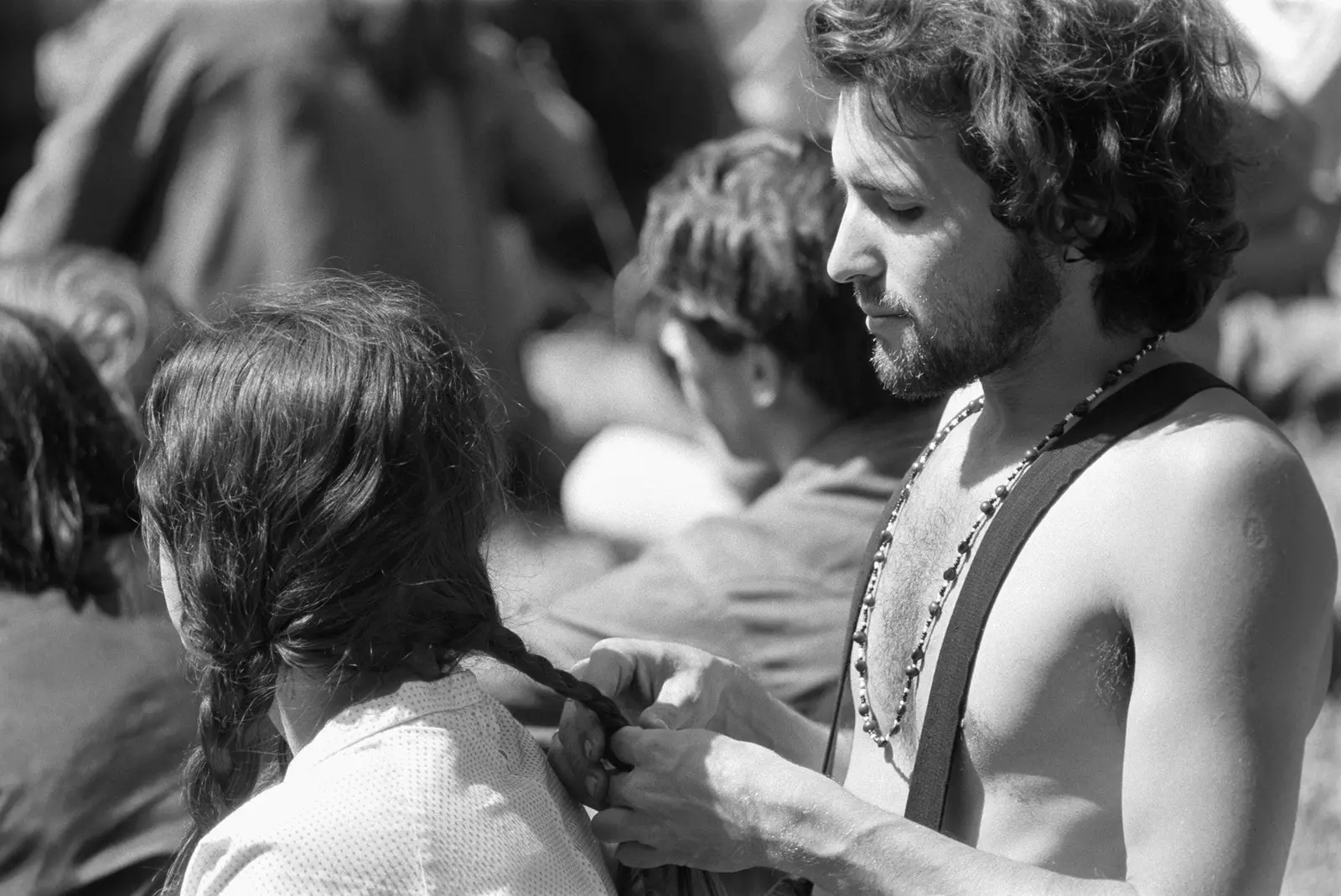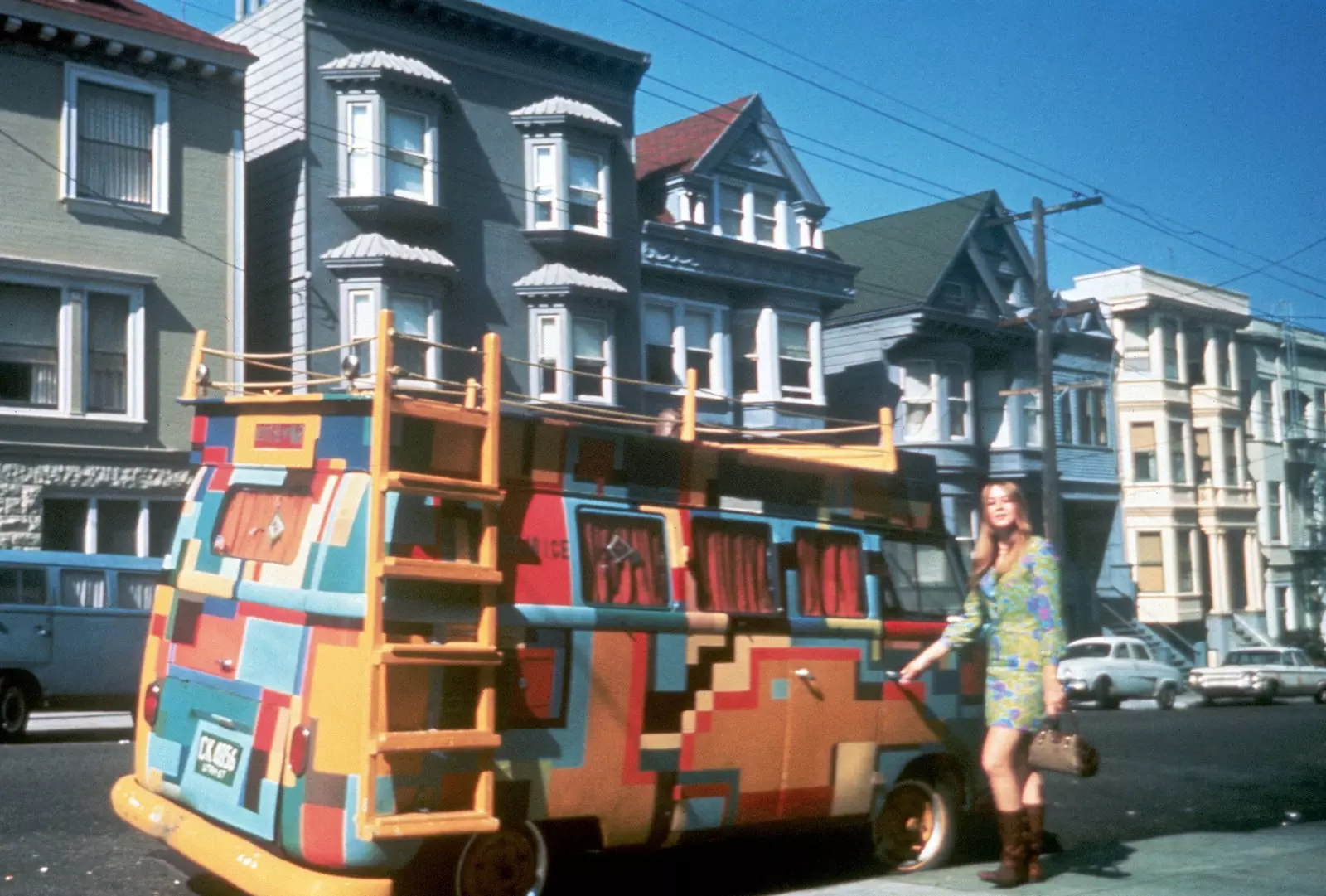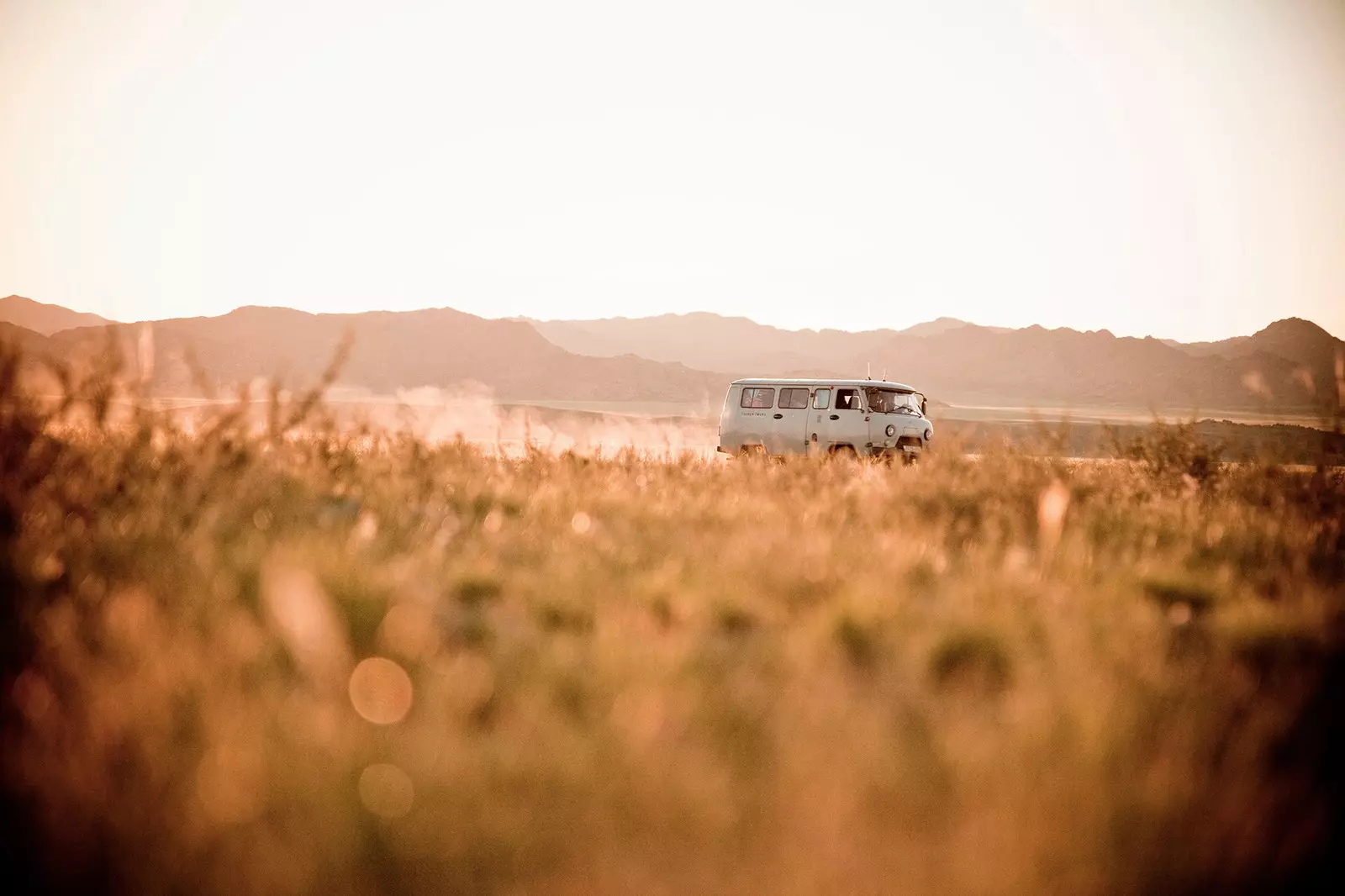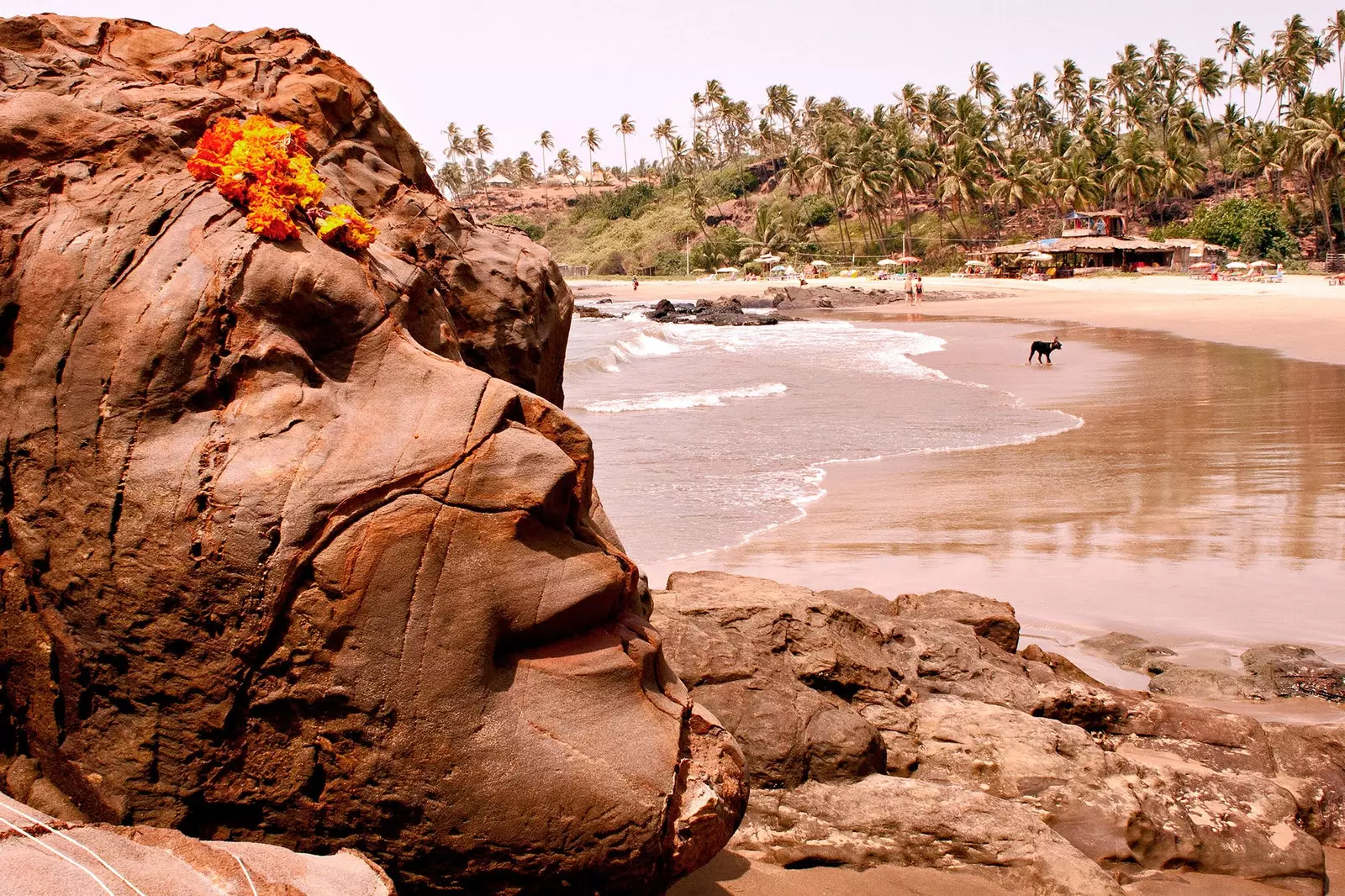
We need routes like the Hippie Trail to come back when this is all over
Virginia Shirley, a young Londoner, arrived by van at the border between Iran and Afghanistan one day in 1972 She along with several friends. Despite being in a desert wasteland, several police officers asked for their passports. Shortly thereafter they were told that they would have to spend the night there and Virginia and the rest of the group were moved to a dark building.
Fear smelled. Until one of the travelers took out his guitar and the Eastern guards approached perplexed: "They play single-string guitars!" That strange night East and West coexisted between music and palms for a few hours. The world was then a more naive place. A forbidden fruit to take more tasty bites.
Today, in the era of confinement and restrictions, thinking about stories like Virginia's is the closest thing to a utopia. Those were the distant years of The Overland, the Hippie Route started by so many dreamers in Volkswagen vans from major western cities to countries like Nepal or India. Mamas & the Papas played, they took the fringes and it didn't matter if he stuck his head out the window to inspire new fragrances.
Because nostalgia is not always past but also future, Let's dream of taking the roads again. Perhaps today, the rainbow is a little closer (and the rise of the van life style is sending us a signal).
YOU MAY SAY I'M A DREAMER...
“Don't make a fool of us” or “You must think about your future”. In the 1950s, post-war bourgeois parents were obsessed with the perfect life. They were victims of their recent history, but their children had fewer worries to consider the system, its cracks and mystical whispers that seeped into each other.
The first allies were underground magazines like International Times, Oz, or Frendz, publications that spoke of distant lands where hashish was stronger and you could live on a pound a day, as the designer Tony Walton recognized. The perfect canvas for the birth of a hippie generation that between 1965 and 1979 promoted a route that departed from the main cities of Europe and the United States and reached the following destinations.

San Francisco became the first great western capital seduced by exotic echoes and road adventures
The love for nature of the German Lebensreform at the end of the 19th century. The organic food gurus of Santa Barbara at the end of the 1930s, but especially the beat generation of the 1950s. The sum of all these currents hatched in the Human Be-In event in San Francisco, in which hipsters like writer Jack Kerouac and poet Allen Ginsberg they passed the baton to the hippie generation singing a group Om.
The Californian city thus became the first great western capital seduced by exotic echoes and road adventures. A trend that moved to the other side of the Atlantic to turn cities like London or Amsterdam into starting points for that “long red line of madmen”, As the Indian writer Gita Mehta mentioned in her book, Karma Tail.
The city of the Grand Bazaar was considered as the entrance to that mystical and fascinating East. The area near the Blue Mosque was a hive of caravans and souvenir shops around the great oracle, The Pudding Shop, particular genius cave where travelers wrote directions on the walls or smoked shisha in a group before crossing into the Middle East.
“At that time, in the Bosphorus Bay there were no bridges and crossing by ferry was the purest feeling of crossing from one continent to another”, assured Tony Wheeler, who together with his wife Maureen created the first Lonely Planet guide, Across Asia on the Cheap, during the Hippie Route.
In the 60s, the Shah intended to 'whitewash' Iran: he circled cities in a Cadillac and drank wine during press conferences. It was the reflection of the tolerance that was breathed in the country of the mosques and the kabab, quite a discovery for outsiders of ancient Persia.
Places like Tehran revealed pictures of women wrapped in kilos of oranges and bazaars where you can buy the best carpets in the world, while the most adventurous slept on the shores of the Caspian Sea or reached Isfahan, a city in whose square barefoot pilgrims recited the Koran before hypnotized foreigners.
AFGHANISTAN
Some travelers had arrived after hitchhiking from Iran. Others in colorful caravans or even sitting on the roof of a bus. They reached Kabul exalted by the music that made the mountains vibrate. To run to the tarot offices and the stores where they imitate their locals with baggy pants.

Because nostalgia is not always past but also future, let's dream of taking the roads again
It didn't matter if they almost fainted in the desert drinking tap water or if a herd of sheep got in your way: everything was new and magical. In the 1960s, Afghanistan was a very different country than it had become when the Soviets arrived in 1979 and the Hippie Trail was blocked. The end of an era for a country later dominated by the Taliban who would destroy icons such as the Buddhas of Bamiyan, the point where the Hippie Route made love with the Silk Road.
Although the Afghans and the Pakistanis never got along very well, crossing the border was not difficult except for the strict controls. Safer than today Pakistan was the perfect hologram of the Thousand and One Nights. An oasis where you can interact with the locals beyond visiting the tourist ABC, a hallmark of hippie travellers, as he rightly described Richard Gregory in A Brief History of the Hippie Trail.
the classics were a room at the Taj Hotel in Lahore for just 10 rupees, the stories that floated in the chai shops and a path to Concordia Glacier, cradle of shepherds so wandering that they did not know the differences of love or race.
NEPAL
hashish it was the main magnet for all travelers arriving from Pakistan to Kathmandu. This is how he was born Old Freak Street, artery of the capital of Nepal that was the threshold to the rest of the country of smiles: the incense-scented temples, the 'Hashish & Mariwana and the Shangri-la described by James Hilton in his book lost horizon (1933) that whispered in valleys of permanent happiness.

There was always a Nirvana at the end of the road: Goa, paradise of yoga, palm trees and free love
INDIA
The Beatles composed The White Album in Rishikesh and Allen Ginsberg, the godfather of hippies, had settled on the banks of the Ganges in Varanasi. India was exploding mysticism that everyone came looking for, though possessed by the 'White Devil' or that impatience that the Hindus did not understand when seeing ecstatic Western travelers waiting eight hours at train stations.
An elephant that could block a bus route in the middle of the tropics, the flying tuk-tuks, the colorful dances of women with polka dotted foreheads. The five senses were not enough in that cosmos overflowing with aromas and colors, but there was always a Nirvana at the end of the road: Goa, paradise of yoga, palm trees and free love where today the trance parties are interrupted by sacred cows.
Although these were the main destinations of the Hippie Route, many took the liberty of taking advantage of certain stops or making an extension: myanmar wave Sri Lanka described by Marco Polo. A Indonesia, Australia, Thailand, where locals shunned men with long hair; or even Japan , a country that began to impose taxes on hippies as a symptom of future disenchantment.
Today all those adventures, those of the hippies, yours, ours and mine seem more distant. But as well described the wonderful book High Adventures in High Places (various authors, 1973), "Any time of darkness is not the end, but the beginning."
Because the Hippie Trail may no longer exist. But we never had so much desire to invent new routes.
